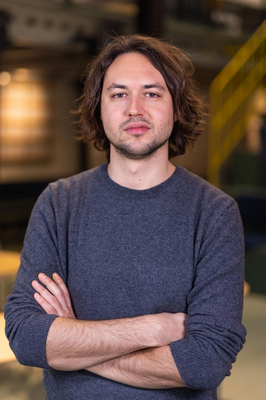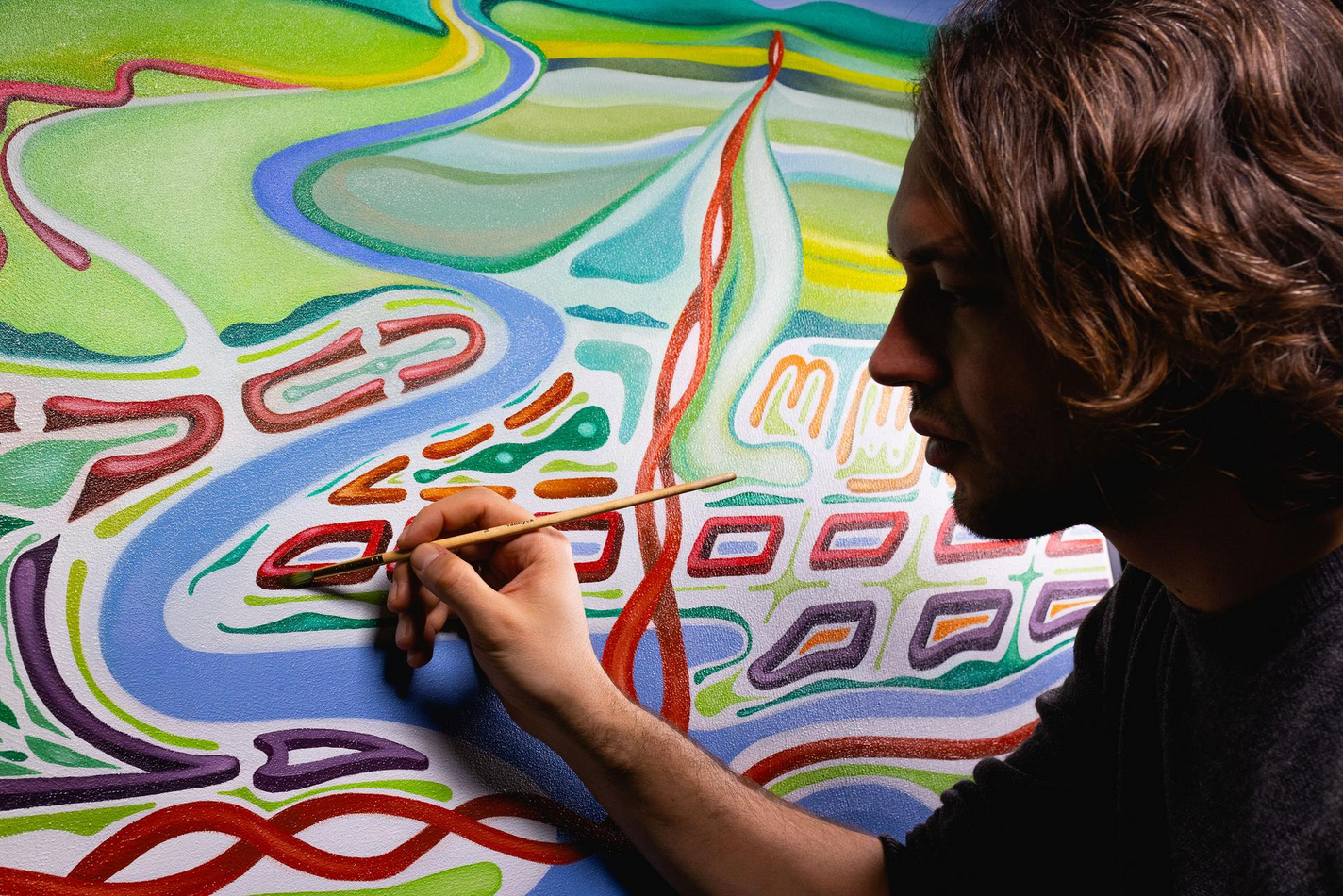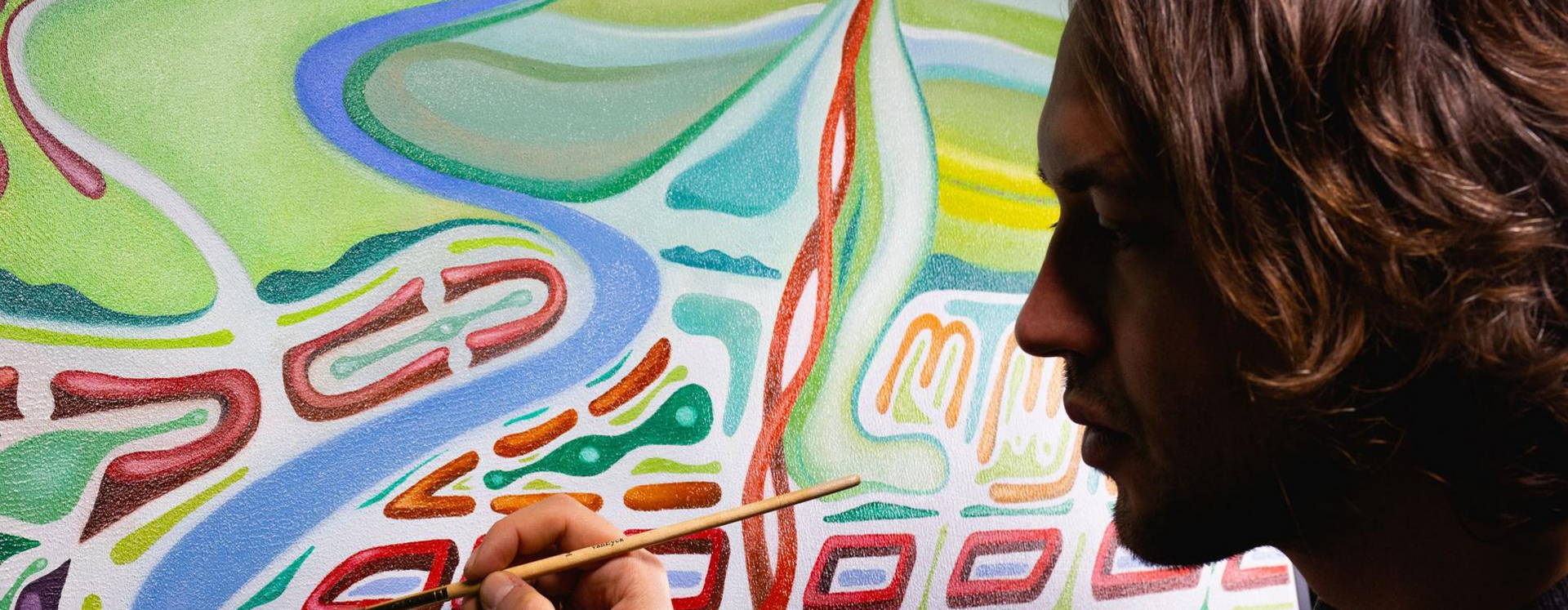#Team2 | Jacopo Grilli
Academy of Architecture | Designer and visual artist

"Imagination as an instrument to create visual explorations for the futureI"
I firmly believe in the power of Imagination as a force for change. I intend to positively explore physical scenarios for the society’s future by combining the imaginative power of visual art and my pragmatic approach of urban design. In this way I wish to influence society in Imagining positive scenarios for the future of our cities. I want to achieve clarity in the methodology “imaginative design“ In order to be able to work independently and evolve professionally and artistically. I am working on a methodology where imagination is considered as an instrument to create visual explorations for the future of the Human Habitat and the society:
Basic human behaviors and practices
Human Habitat is a design and visual research project that, considers basic human behaviors and practices in the future, as a starting point for visualizing meta-design explorations on an imaginary and subsequently real urban context.The human practices that I would like to consider for the future of the city are: meet, reproduce, move, resist, believe, learn.
Tested in a real context
Each practice will be explored visually as a spatial ideal and tested in a real context. Working together with several art and performative disciplines is a great opportunity and I think it will benefit the work of everyone’s open to discussions and co-creation. I wish to continue the research in a new advanced level, after the pilot project within the culture club I will apply the idea for fonds, in order to use more resources.
Interview with Jacppo
There are an enormous number of people living in the city and that will only increase in the future. Cities should therefore be amazing places to live, but that is not always the case, according to painter and urban designer Jacopo Grilli (30). The alumnus of the Academy of Architecture is therefore trying to design the city of the future using a combination of painting, urban design and – the most important element – imagination.
His project is called Human Habitat. ‘The city has become our habitat, our new nature’, says Jacopo. ‘Therefore, it is strange that cities are not in keeping with human nature. More is needed to achieve that than, for example, trees and plants. It’s a matter of thinking about urban design in a different way. If we want to make the city human, we need to do that using that which makes us human: our emotions.’ However, you cannot map out emotions, therefore Jacopo is researching them with his imagination. ‘We live in cities, meet each other there, learn from each other. Those are core behaviours of people and that includes emotions. I research one of them every six months and test the findings in one or two cities simultaneously. How will we meet each other, for example, in 100 years’ time? I conceive an ideal picture for that and base a painting on it.’
Jacopo is not only using his own imagination for his project. On the ‘imaginarium’, a ring-shaped canvas, he allows strangers and colleagues to express their emotions on the blank canvas that surrounds them. ‘I’m not eight years old anymore, so my imagination is not as good as it used to be. That is what the imaginarium is for: I enable other people to depict their imagination and use that imagination for my project.’ Human Habitat will ultimately lead to two exhibitions – one in Amsterdam and one in Jacopo’s hometown Milan – so that he can make comparisons and draw from a broader result. Until then, he feels like a fish in water in the Culture Club. ‘This is an interdisciplinary environment and I also see myself as interdisciplinary. Sometimes, I can best express myself with a song, while other times with a painting or a building. Without the influence that my teammates have on me, I could never have conceived the imaginarium. In the Culture Club, everything comes together and that is how we learn from each other.
(by: Sjoed Ponstein)



